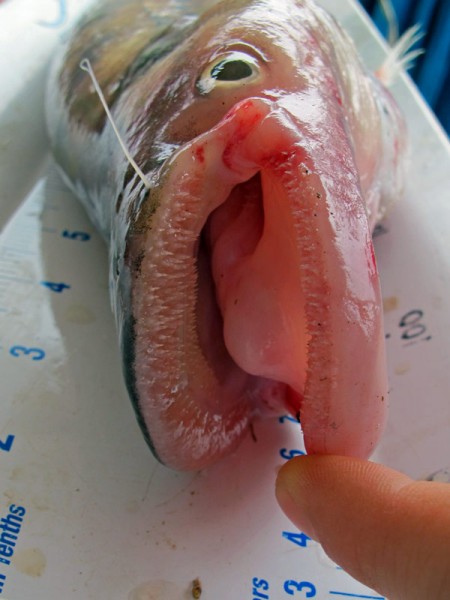Monday August 1, 2011
 Many species inhabit the Mekong River of Southeast Asia, and all of them have some unique physical traits well-adapted for the food they eat. In June of this year, during routine sampling by our field team on a tributary of the Mekong, we examined this sheatfish (Phalacronotus micronemus) which belongs to the catfish family Siluridae. The smoothly curved band of vomerine teeth shown here are used to hold the smaller pelagic fishes this catfish preys upon.
Many species inhabit the Mekong River of Southeast Asia, and all of them have some unique physical traits well-adapted for the food they eat. In June of this year, during routine sampling by our field team on a tributary of the Mekong, we examined this sheatfish (Phalacronotus micronemus) which belongs to the catfish family Siluridae. The smoothly curved band of vomerine teeth shown here are used to hold the smaller pelagic fishes this catfish preys upon.
The morphology of teeth tells a lot about the trophic level, preferred food type, and behavior of a particular species. Some fishes are specialized for scraping algae off rocks, while others like the Mekong freshwater stingray (Dasyatis laosensis) needs a completely different tooth structure for the benthic invertebrates it eats. Interestingly, adult males have pointed teeth, while juveniles and females have blunt teeth. This difference is likely related to mating requirements. With over 850 species of fishes estimated to live in the Mekong River, there are a wide variety of tooth shapes we encounter in our field work there.
